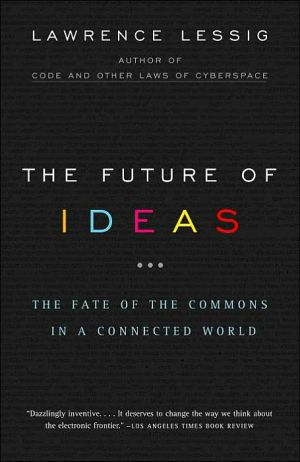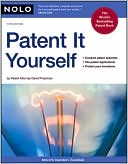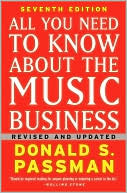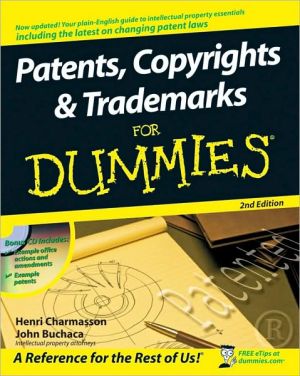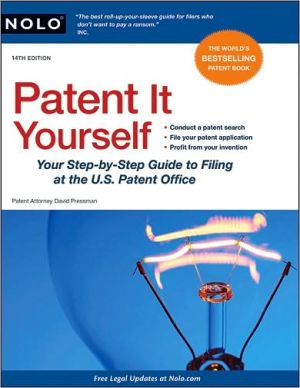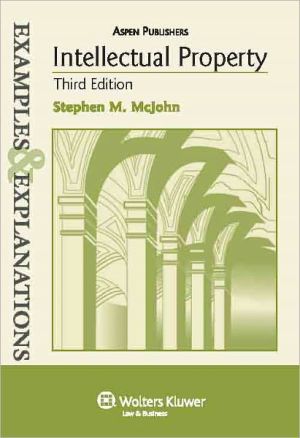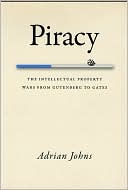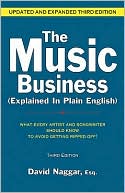The Future of Ideas: The Fate of the Commons in a Connected World
The Internet revolution has come. Some say it has gone. In The Future of Ideas, Lawrence Lessig explains how the revolution has produced a counterrevolution of potentially devastating power and effect. Creativity once flourished because the Net protected a commons on which widest range of innovators could experiment. But now, manipulating the law for their own purposes, corporations have established themselves as virtual gatekeepers of the Net while Congress, in the pockets of media magnates,...
Search in google:
In The Future of Ideas, Lawrence Lessig explains how the Internet revolution has produced a counterrevolution of devastating power and effect. The explosion of innovation we have seen in the environment of the Internet was not conjured from some new, previously unimagined technological magic; instead, it came from an ideal as old as the nation. Creativity flourished there because the Internet protected an innovation commons. The Internet s very design built a neutral platform upon which the widest range of creators could experiment. The legal architecture surrounding it protected this free space so that culture and information the ideas of our era could flow freely and inspire an unprecedented breadth of expression. But this structural design is changing both legally and technically. Publishers Weekly In his previous book, Code and Other Laws of Cyberspace, constitutional scholar and former Industry Standard columnist Lessig offered a wary assessment of both the burgeoning architecture of the Internet and the work of those seeking to control its growth. In this sprawling follow-up, Lessig takes his arguments in Code to the next level. Warning of a digital future that, despite all its promise, could in fact turn out quite darkly, Lessig argues that while most of the world is still pondering a digital revolution, a counterrevolution is already underway. Programmers are closing off Internet innovation through code. And lawmakers, lobbied by entrenched commercial interests, are applying overly broad interpretations of copyright and intellectual property laws. To fully realize the cultural and economic benefits of our technological revolution, Lessig urges the creation of a public "commons" for the Internet, an open system that would allow for quicker exchange of intellectual capital and offer future innovators the ability to freely build upon the innovations of others. Some of Lessig's sweeping proposals are sure to spark a lively debate, but his well-reasoned, clearly written argument is powerful. If we fail to deal appropriately and immediately with the intellectual, legal, cultural and economic issues associated with rapid technological change, Lessig asserts, we risk not only squandering the promise of the digital future, but reverting to "a dark age" of increased corporate and government control. Although some readers may find parts of the book rather dense, Lessig has authored another landmark book for the digital age. Agent: Amanda Urban. (Nov.) Copyright 2001 Cahners BusinessInformation.
Davis Guggenheim is a film director. He has produced a range of movies, some commercial, some not. His passion, like his father’s before, is documentaries, and his most recent, and perhaps best, film, The First Year, is about public school teachers in their first year of teaching–a Hoop Dreams for public education.\ In the process of making a film, a director must “clear rights.” A film based on a copyrighted novel must get the permission of the copyright holder. A song in the opening credits requires the rights of the artist performing the song. These are ordinary and reasonable limits on the creative process, made necessary by a system of copyright law. Without such a system, we would not have anything close to the creativity that directors such as Guggenheim have produced.\ But what about the stuff that appears in the film incidentally? Posters on a wall in a dorm room, a can of Coke held by the “smoking man,” an advertisement on a truck driving by in the background? These too are creative works. Does a director need permission to have these in his or her film?\ “Ten years ago,” Guggenheim explains, “if incidental artwork . . . was recognized by a common person,” then you would have to clear its copyright. Today, things are very different. Now “if any piece of artwork is recognizable by anybody . . . then you have to clear the rights of that and pay” to use the work. “[A]lmost every piece of artwork, any piece of furniture, or sculpture, has to be cleared before you can use it.”\ Okay, so picture just what this means: As Guggenheim describes it, “[B]efore you shoot, you have this set of people on the payroll who are submitting everything you’re using to the lawyers.” The lawyers check the list and then say what can be used and what cannot. “If you cannot find the original of a piece of artwork . . . you cannot use it.” Even if you can find it, often permission will be denied. The lawyers thus decide what’s allowed in the film. They decide what can be in the story.\ The lawyers insist upon this control because the legal system has taught them how costly less control can be. The film Twelve Monkeys was stopped by a court twenty-eight days after its release because an artist claimed a chair in the movie resembled a sketch of a piece of furniture that he had designed. The movie Batman Forever was threatened because the Batmobile drove through an allegedly copyrighted courtyard and the original architect demanded money before the film could be released. In 1998, a judge stopped the release of The Devil’s Advocate for two days because a sculptor claimed his art was used in the background. These events teach the lawyers that they must control the filmmakers. They convince studios that creative control is ultimately a legal matter.\ This control creates burdens, and not just expense. “The cost for me,” Guggenheim says, “is creativity. . . . Suddenly the world that you’re trying to create is completely generic and void of the elements that you would normally create. . . . It’s my job to conceptualize and to create a world, and to bring people into the world that I see. That’s why they pay me as a director. And if I see this person having a certain lifestyle, having this certain art on the wall, and living a certain way, it is essential to . . . the vision I am trying to portray. Now I somehow have to justify using it. And that is wrong.”\ This is not a book about filmmaking. Whatever problems filmmakers have, they are tiny in the order of things. But I begin with this example because it points to a much more fundamental puzzle, and one that will be with us throughout this book: What could ever lead anyone to create such a silly and extreme rule? Why would we burden the creative process–not just film, but generally, and not just the arts, but innovation more broadly–with rules that seem to have no connection to innovation and creativity?\ Copyright law, law professor Jessica Litman has written, is filled with rules that ordinary people would respond to by saying, “ ‘There can’t really be a law that says that. That would be silly’ ”–yet in fact there is such a law, and it does say just that, and it is, as the ordinary person rightly thinks, silly. So why? What is the mentality that gets us to this place where highly educated, extremely highly paid lawyers run around negotiating for the rights to have a poster in the background of a film about a frat party? Or scrambling to get editors to remove an unsigned billboard? What leads us to build a legal world where the advice a successful director can give to a young artist is this:\ I would say to an 18-year-old artist, you’re totally free to do whatever you want. But–and then I would give him a long list of all the things that he couldn’t include in his movie because they would not be cleared, legally cleared. That he would have to pay for them. [So freedom? Here’s the freedom]: You’re totally free to make a movie in an empty room, with your two friends.\ \ A time is marked not so much by ideas that are argued about as by ideas that are taken for granted. The character of an era hangs upon what needs no defense. Power runs with ideas that only the crazy would draw into doubt. The “taken for granted” is the test of sanity; “what everyone knows” is the line between us and them.\ This means that sometimes a society gets stuck. Sometimes these unquestioned ideas interfere, as the cost of questioning becomes too great. In these times, the hardest task for social or political activists is to find a way to get people to wonder again about what we all believe is true. The challenge is to sow doubt.\ And so it is with us. All around us are the consequences of the most significant technological, and hence cultural, revolution in generations. This revolution has produced the most powerful and diverse spur to innovation of any in modern times. Yet a set of ideas about a central aspect of this prosperity–“property”–confuses us. This confusion is leading us to change the environment in ways that will change the prosperity. Believing we know what makes prosperity work, ignoring the nature of the actual prosperity all around, we change the rules within which the Internet revolution lives. These changes will end the revolution.\ That’s a large claim for so thin a book, so to convince you to carry on, I should qualify it a bit. I don’t mean “the Internet” will end. “The Internet” is with us forever, even if the character of “the Internet” will change. And I don’t pretend that I can prove the demise that I warn of here. There is too much that is contingent, and not yet done, and too few good data to make any convincing predictions.
Preface1"Free"3Pt. IDot.Commons172Building Blocks: "Commons" and "Layers"19The Commons19Layers233Commons on the Wires264Commons Among the Wired495Commons, Wire-less736Commons Lessons85Pt. IIDot.Contrast1017Creativity in Real Space103Creativity in the Dark Ages104The Arts104Commerce1128Innovation from the Internet120New Products from the Net122HTML Books122MP3123Film124Lyric Servers and Culture Databases124New Markets126New Means of Distribution126My.MP3127Napster130New Demand132New Participation: P2P134Pt. IIIDot.Control1439Old vs. New14510Controlling the Wires (and Hence the Code Layer)147The End-to-End in Telephones149Fat Pipe151AT&T Cable15311Controlling the Wired (and Hence the Content Layer)177Increasing Control180Copyright Bots180CPHack184DeCSS187iCraveTV190MP3192Napster194Eldred196Consequences of Control19912Controlling Wire-less (and Hence the Physical Layer)21813What's Happening Here?23414Alt. Commons240The Physical Layer240Free Spectrum241Free Highways244The Code Layer246Neutral Platforms246The Content Layer249Copyright250Patents25915What Orrin Understands262Notes269Index335
\ From Barnes & NobleThe Barnes & Noble Review\ This is an important book: an impassioned warning about the urgent threat to innovation and creativity born with the possibilities of the digital age. Lawrence Lessig's arguments are deeply felt but also infused with the scholarship necessary to support his cause -- and written in a style that will engage sophisticated as well as lay audiences. \ Lessig begins by reminding us of the innovations made possible by the Internet and tantalizing us with the idea of unknown possibilities waiting in the future. But this reminder serves as a preamble to his basic contention that the Internet is in danger of being controlled in ways that will ultimately chill innovation and creativity.\ Lessig's thesis, put simply (and colorfully), is that the dinosaurs are trying to stop evolution: Existing commercial interests seek to control any possible threat made to their markets by new technologies and distribution systems. Lessig carefully and convincingly prepares the reader for this argument, explaining how the Internet is an “innovation commons” -- a resource open and free to anyone -- much as public roads are common zones of transit. Along the digital "road," innovation has certainly flourished; in the past few years, we've witnessed the emergence of eBooks and peer-to-peer capability as well as the dissemination of technology that allows almost anyone to create high-quality films for relatively little money. Yet the dinosaurs (the record industry and cable companies, to name a few) threaten the expansion of possibilities, use are the courts, patent laws, copyright interpretation, or simply control of the “road” to threaten the expansive possibilities The future that awaits us could be one in which the content you are able to access is predetermined by others.\ Lessig argues that we have more to gain culturally and commercially by maintaining the Internet as an innovation commons.\ Even if you aren’t conversant in Internet architecture, intellectual property rights, or the theories of Adam Smith, you’ll find this book compelling and relevant to your daily life. Lessig’s mastery of his subject and his accessible prose make his work a thrilling one to read. This is a rousing book, one that truly makes you wake up and reimagine the Internet -- and want to protect it. (Holly McGuire)\ (Holly McGuire is a book editor and consultant based in Chicago, Illinois.)\ \ \ \ \ \ Publishers WeeklyIn his previous book, Code and Other Laws of Cyberspace, constitutional scholar and former Industry Standard columnist Lessig offered a wary assessment of both the burgeoning architecture of the Internet and the work of those seeking to control its growth. In this sprawling follow-up, Lessig takes his arguments in Code to the next level. Warning of a digital future that, despite all its promise, could in fact turn out quite darkly, Lessig argues that while most of the world is still pondering a digital revolution, a counterrevolution is already underway. Programmers are closing off Internet innovation through code. And lawmakers, lobbied by entrenched commercial interests, are applying overly broad interpretations of copyright and intellectual property laws. To fully realize the cultural and economic benefits of our technological revolution, Lessig urges the creation of a public "commons" for the Internet, an open system that would allow for quicker exchange of intellectual capital and offer future innovators the ability to freely build upon the innovations of others. Some of Lessig's sweeping proposals are sure to spark a lively debate, but his well-reasoned, clearly written argument is powerful. If we fail to deal appropriately and immediately with the intellectual, legal, cultural and economic issues associated with rapid technological change, Lessig asserts, we risk not only squandering the promise of the digital future, but reverting to "a dark age" of increased corporate and government control. Although some readers may find parts of the book rather dense, Lessig has authored another landmark book for the digital age. Agent: Amanda Urban. (Nov.) Copyright 2001 Cahners BusinessInformation.\ \ \ Library JournalIs the Internet evolving into a controlled environment? Should it be completely free from intellectual property rights? Lessig (Stanford Law Sch.; Code: And Other Laws of Cyberspace) argues that as the Internet faces the challenges of intellectual property laws, it should not become so controlled that it discourages innovation and creativity in the digital world. He explains the historical context of the Internet and its relationship to the "commons" (items that are made available for free) and argues that, for the Internet to evolve and be an open environment, there must be a balance between intellectual property and the public domain. His book is filled with current case and social histories, as well as extensive source notes. His examples are thorough but can be excessively detailed. Though it is written for the lay reader, it will be better understood by those with some technological background. Recommended for all types of libraries, especially those maintaining materials on intellectual property. Rob Martindale, Dallas P.L. Copyright 2001 Cahners Business Information.\ \ \ \ \ Kirkus ReviewsThe fate of free expression in cyberspace hangs in the balance, avers Lessig (Law/Stanford Univ.; Code: and Other Laws of Cyberspace, not reviewed), who offers practical advice to save it. From his opening rally-"The forces that the original Internet threatened to transform are well on their way to transforming the Internet"-Lessig offers a timely polemic against the sterilization of cyberspace. Created both as a venue for the quick dissemination of information and above all as a fiercely open medium, cyberspace, he argues, now suffers from innumerable and insuperable barriers created by corporate interests to protect their dominance. Maneuvering through a twisted thicket of scientific and legal arcane, his prose and reasoning could not be clearer or more passionate. He even makes computer wiring somewhat comprehensible for the layperson: no small achievement. Using concrete examples from daily life, Lessig clarifies such complex issues as intellectual property in cyberspace by providing a historical overview of relevant legal cases from player-piano rolls to cable TV to Napster. Although intellectual property laws are essential to protect the rights of creators, at what point does the protection of authorial rights unnecessarily cripple the public discourse? Why can people hang a poster of the Simpsons on their walls but not on their web pages? One of the major threads of Lessig's argument is the inherent lunacy of applying "real world" laws to cyberspace, as when eBay sued a rival for trespass because they "illegally entered" its site. For Lessig, the cyberspace commons as intellectual playground and societal gathering place must be preserved, lest we soon feel the stultifyingeffect of sterility drowning what should be a rowdy and polyphonic discourse. The author closes with a reserved homage to US Senator Orrin Hatch, a politician who (perhaps unexpectedly) seeks to preserve the freedoms of the Internet. Part manifesto, part jeremiad, but all essential reading for anyone concerned with the future of creative freedom in cyberspace.\ \
